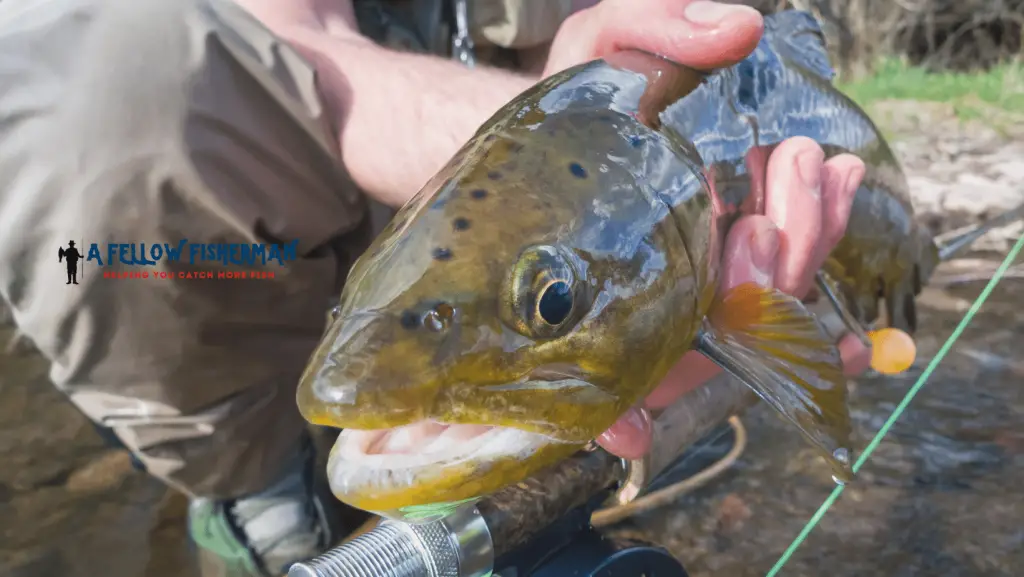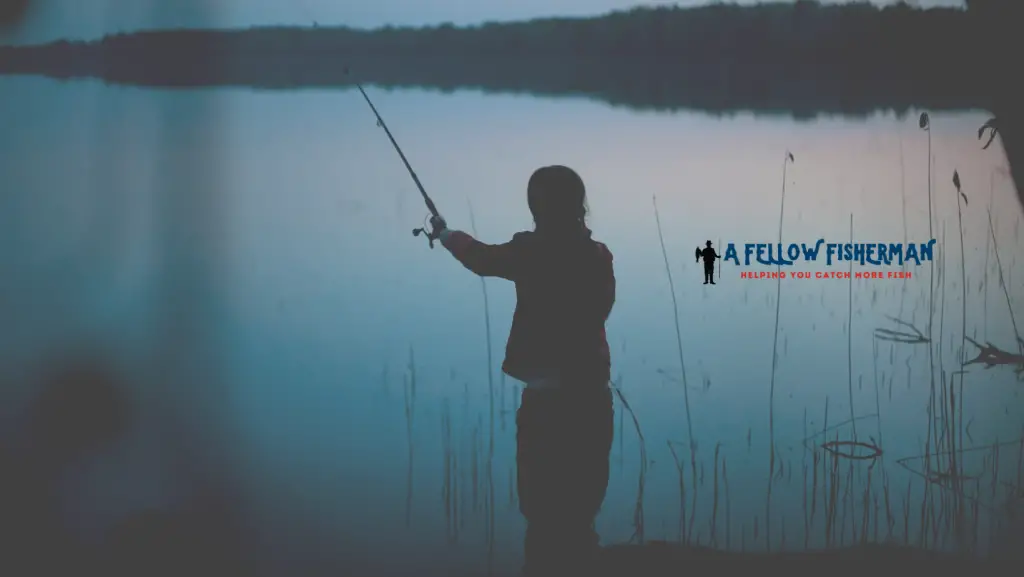
Night fishing for trout can be incredibly productive. Trout are always on the prowl for a good meal, and at night they like to take advantage of the darkness to ambush smaller fish.
The trout start biting more aggressively just before sunset and keep that bite going throughout the night in most lakes. The real question is, do you have what it takes to stay out there with them?
I’ve been fishing and guiding for most of my life. I fished for trout in the Rocky Mountains during my youth and would night often fish during the summer. Furthermore, I remember nights sitting in the boat, covered in too much bug spray, freezing in the 40° mountain air, catching splake and brown trout all night long. When we got tired enough to head back to the cabin, we would clean the catch and head to bed. The next morning was filled with the smell of freshly cooked trout and scrambled eggs.
Trout fishing gets into your blood. I’ve guided anglers on both coasts for years yet still get the call back to the Rockies every year to catch some beautiful high alpine trout. If you’ve done the same, you know the feeling.
I’ve written this post to detail the who, what, when, and where of night fishing for trout. Several techniques work well, though some daytime offerings aren’t successful after dark. Let’s look at what we’ll cover:
- Types of trout to target at night
- What lures work best
- When to start fishing
- Where to look for fish
Trout to Target at Night

There are some people out there with the opinion that all trout are the same. That couldn’t be farther from the truth. Cutthroat fight and feed completely different from rainbows, as do browns, brookies, splake, tigers, and mackinaw. Not all trout behave the same. With that said, once the sun sets, browns, tigers, rainbows, and splake go on the prowl.
Brown trout are aggressive fish that will actively pursue a lure or minnow after dark. The brown is always on the lookout for smaller fish to eat. Until they grow big enough to outclass other predators, they prefer to hunt at night.
If you’re on a lake that had a recent rainbow trout plant, fish a rainbow-colored lure with some silver flash around the plant area at night. Browns will smash that lure. They like to cruise next to weed beds. Minnows try to hide in the beds, and the browns hold nearby, waiting for the occasional minnow to swim too far away from cover. The patient watch and snatch approach seem to work well for them because browns can regularly grow to over 10-pounds.
Rainbow trout are everywhere these days. They bite on almost anything shiny at night if it has a bit of power bait or nightcrawler attached. At night, rainbows stop hiding in deeper depths and will come into shallower waters searching for dinner. They chase minnows the same as browns. The big difference is that browns eat rainbows as well. So, the ‘bows keep an eye out for browns. Rainbow trout are the easiest to catch at night of all the types covered.
Tiger trout love the evening/night. They seek out cooler water, so it’s game on once the sun goes down. The best thing about tiger trout is their extraordinary aggressiveness. Toss a panther Martin spinner at them, and you’ll either bring in a tiger or a piece of your lure. Okay, maybe not THAT aggressive, but close. Once tigers get to 12”, they switch from eating insects to fish. Minnows and rainbows stand zero chance around these guys. They grow fast and big and love the dark.
Splake is another fish that enjoy a good midnight snack. From an hour before sunset until close to midnight, splake is very active. Don’t take that as an indicator they are an easy catch. They are just active. Splake is a difficult fish to coax into the boat on most nights, but if you catch them right, you’ll have a great time.
Best Bait for Trout Fishing at Night
Night fishing is obviously different from fishing in the daytime. Bright, intricately detailed lures are wasted at night. It’s dark, after all. Fish can’t see the decorations. They can see some occasional flash of spinning lures and can feel the vibration of a bladed lure. Trout can feel the vibrations and will search them out. Tigers will come to a long distance in search of a Vibrax lure or the like.
Spinners look like minnows and do a good job of drawing in the browns searching out dinner. After dark, the key is to keep everything simple. The retrieve should remain consistent. The only major change is the size. Everything you toss should be bigger. Since the trout can’t easily see the lures, they need the larger size to better make out the lure in the water.
Glow in the dark lures are a good option for deeper fishing. If you’re targeting fish deeper than 15-feet or so, try out a glowing lure. It might make the difference. It definitely works when ice fishing.
Best Time to Fish for Trout
The lake is starting to calm down. Wave runners and jet skis are leaving the water as the recreational boaters head in for the night. You’ve been waiting for this all day. The sun is almost behind the hills, and the temperature is starting to cool. A few yards from shore, you see the first sign of activity. A beautiful trout rises to a fly on the surface, sending ripples across the water. It’s now time to go fishing.
Rig up your rod with your preferred bait and cast out. Keep going from now until a few hours after dark. Chances are, if you’ve seen the surface action, you’re in a good spot. You’ve found them, you’ve found the time, now you just need the patience.
Where to Fish for Trout at Night
Deciding where to fish is the real challenge. That’s why there’s daylight. If you have a boat, be sure to mark all the structures you come across and plan on returning to at night. Once the sun goes down, get as close as possible to allow for short casts, then clobber that structure with bait or lures.
Fishing from shore uses the same basic theory. Find structure, then return to it at sundown.
In both cases, wear bug spray. If you’re in bear country, be prepared for when you come across one.
Are trout attracted to light at night?
There’s no one definitive answer to this question. Since it depends on the particular trout and the environment where they’re living. In general, though, trout are attracted to certain colors of light (like blue and green) and will move towards areas where they see those colors shining. This is why anglers often use artificial lures that emit those colors when fishing for trout at night.
Below is a really cool video about night fishing for trout to give you a visual:
Time to Get Fishing
Night fishing for trout is a great way to catch breakfast, and a great way to create some fun memories. Head out by yourself or take along your friends and family. You’ll learn right away about the bug thing, and after that first fish, you’ll learn about how it gets into your blood. Like I said earlier, I’ve caught fish across the country, yet I return year after year to catch these wily trout because they call to me.
I’m hoping they do the same for you, and that you get the chance to go night fishing for trout sometime soon.
For guidance on choosing the proper gear, check out the pages below:










